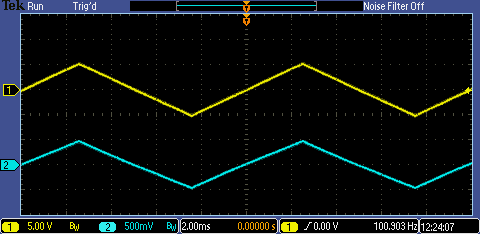As I further learn about the intricacies of electronics and do not have an adequate oscilloscope I have a question regarding SMPS. I know how regular old go to hell transformers work and require a sine wave switching to positive and negative voltages to create the magnetic field induced into the iron core and so forth. But does a sine wave have to go Into negative voltages to work? Let me elaborate a little because I tend to over complicate my thoughts.
Lets say I have a mosfet that I use as a switch to pulse a dc voltage on and off at a significant speed in the kHz range through a wire wrapped in a coil on a transformer core, would that be able to create a half sine wave and therefore be used to induce a voltage in a secondary winding?
I am wondering if in a smps if the electronics recreate the sine wave to go high and low instead of high and off?
If this is confusing speak to you let me know and I will try to draw something up on paper and photo it for the thread.






